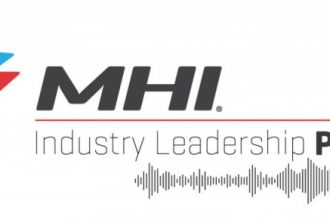What Material Handling and Fleet Managers Need to Know: California Updates its LCFS Fuel Producer Credits Regulations

This year California updated its Fuel Producer Credits Regulations, affecting all material handling companies that are located in or do business with the state. The California Air Resources Board (CARB) passed new regulations in 2024 that recently went into effect for the organization’s Low Carbon Fuel Standard (LCFS) program.
What is the LCFS program?
Created in 2011, California’s Low Carbon Fuel Standard program was created to incentivize the reduction of greenhouse gas emissions from the state’s transportation fuel use. It provides benefits for those who use low-carbon or renewable fuel alternatives and has costs attached for those who use high-carbon fuels (fossil fuels). The goal is to reduce carbon emissions and improve air quality for California residents.
How does it work?
California measures the carbon output of various fuels through a standard called Carbon Intensity (CI). Fuels that are below the CI target threshold produce energy credits in the program while those above the threshold have to buy credits from low carbon producers to offset their higher carbon emissions. The idea is for these high carbon producers to eventually switch to lower carbon producing fuels, but until then they can balance their deficits with those producing a credit in order to be compliant in the State of California.
How does this program affect the material handling industry?
Because material handling warehouses lead the industry in rechargeable lithium battery electricity usage in their forklifts and lift trucks, they are already operating under CARB’s CI targets, meaning that these businesses can receive credits from high-carbon fuel producers under California’s program.
“It’s not a consumer-based program; It’s a producer-based program,” explains Oliver Stanbury owner of MHI member Stanbury Electrical Engineering. “The reason that it becomes applicable to material handling fleet owners is that as an owner of a battery charger, they’re considered to be producing the fuel. Under the program they are a fuel producer so they can create credits and then sell them to the high-carbon fuel producers.” Basically, the chargers already in a warehouse take AC electricity and convert it to DC electricity to run their trucks. That is energy production under the program making these companies eligible to receive credits and subsequently sell them to high carbon fuel producers who have a credit deficit.
“The use of high-carbon fuel is made more expensive by the virtue of the need for the fuel producer to buy these credits,” Stanbury continued. “The production and use of low-carbon fuel is in a sense subsidized. For the most part states agencies don’t get revenue from the program or participate in the monetary transaction. They manage the production of credits, awarding the credits to low carbon fuel producers and monitoring the high carbon fuel producers to ensure they purchase enough credits to offset their carbon deficit.”
What changes did California make?
There were two changes to California’s program. One, effective immediately, is that the CI target was lowered by 20 percent, which will increase the cost of the credits for high-carbon fuel producers.
The change to California’s program that will affect the material handling industry – effective January 1, 2026 – is that companies will have to monitor and report energy usage data before generating their credits. Before, the program was based on estimation models. Now companies must meter their electricity use and provide that information to get their credits, so they are not oversupplying credits in the market.
Stanbury says this shouldn’t be much of a problem for companies that have newer lithium battery technology because monitoring systems are already built in. However, companies with older fleets will need to upgrade their equipment to continue to operate in California.
Are there other places with programs like California’s?
Yes, Oregon and Washington in the US and British Columbia in Canadian have LCFS programs. Canada also has a nationwide Clean Fuel Regulation (CFR) program. New Mexico passed an LCF bill in March 2024 with regulations currently being set that will go into effect no later than July 1, 2026, and New York passed an LCF bill in January of this year. New Jersey, Illinois, Massachusetts, and Minnesota have bills for LCF programs currently working their way through state legislatures and Hawaii, Colorado, Michigan, Pennsylvania, and Vermont are considering introduction of such programs.
Why are these programs important to the material handling industry?
Stanbury says these programs have value for the material handling industry, “since material handling has been electric since before it was fashionable.” He says LCFS programs are like a lever that states can pull to provide economic incentives to companies who lower their carbon emissions. It’s “the value that you gain if you generate the credits versus the costs that you’re going to endure if you need to buy them.”
For more information on California’s LCFS program, visit the California Air Resources Board website: https://ww2.arb.ca.gov/our-work/programs/low-carbon-fuel-standard.
For more information about the Advanced Energy Council: mhi.org/aec
For further articles from the Advanced Energy Council:
Choppy Waters Ahead: Navigating a New Wave of Tariffs
When a Battery Becomes a Razor: Using Lithium-ion Batteries in Peak Shaving Energy Strategies
ICYMI: AEC’s ProMat 2025 Discussion Panel Overview
Second Acts: How Used Lithium-ion Batteries Can Continue Performing in Your Operations
Recalculating: Including Productivity Gains in Total Cost of Ownership
Charging Forward: What’s Next in Advanced Energy
What Is a Battery Passport? A Ticket to Lithium-ion Battery Transparency



